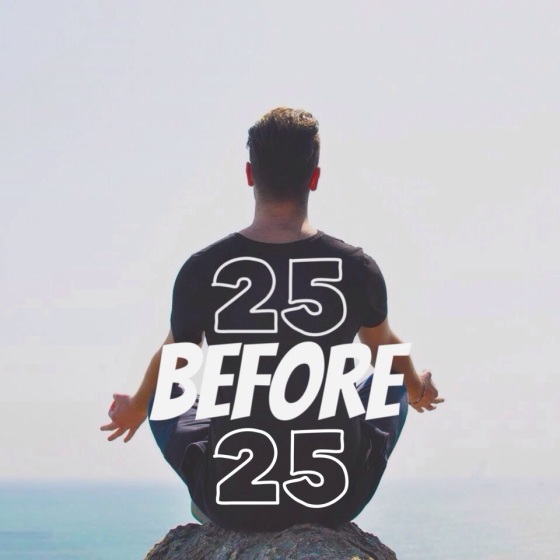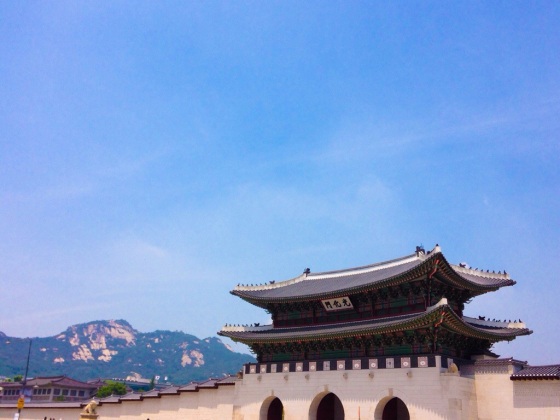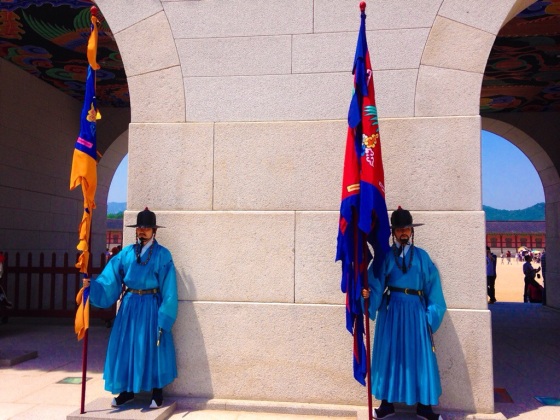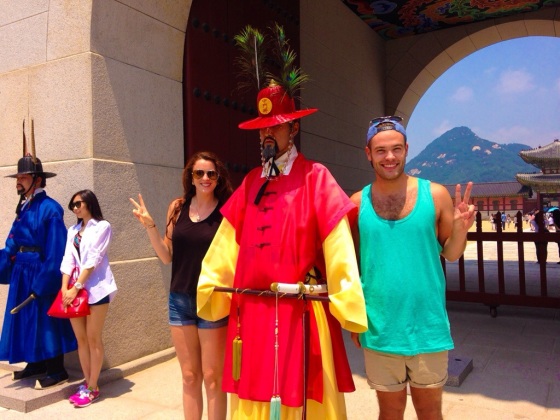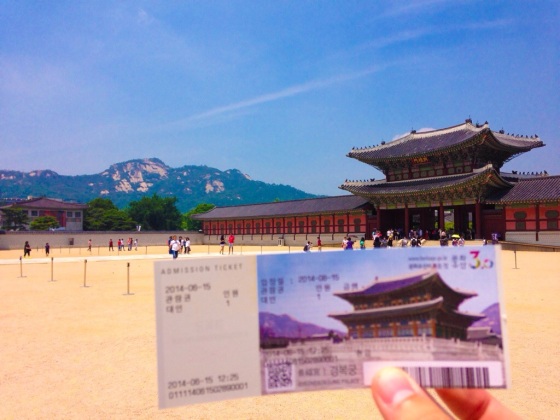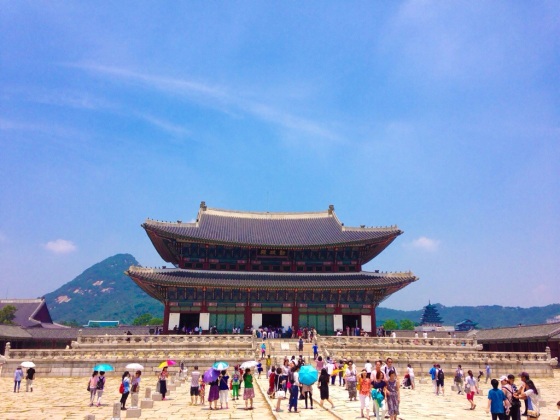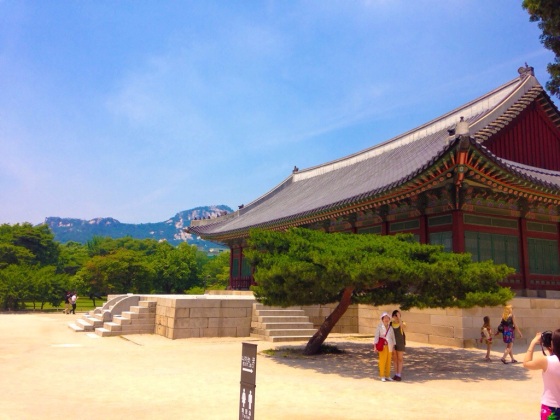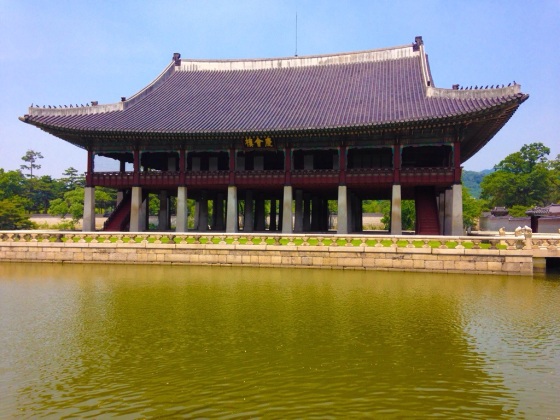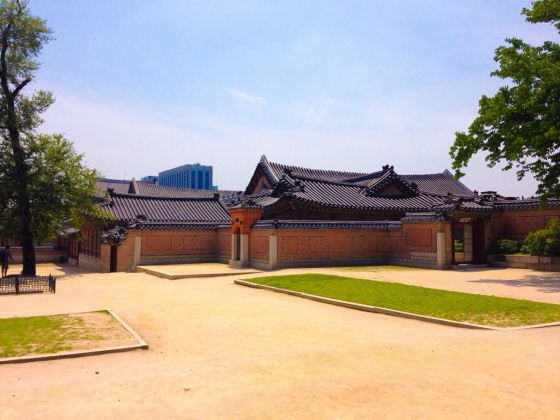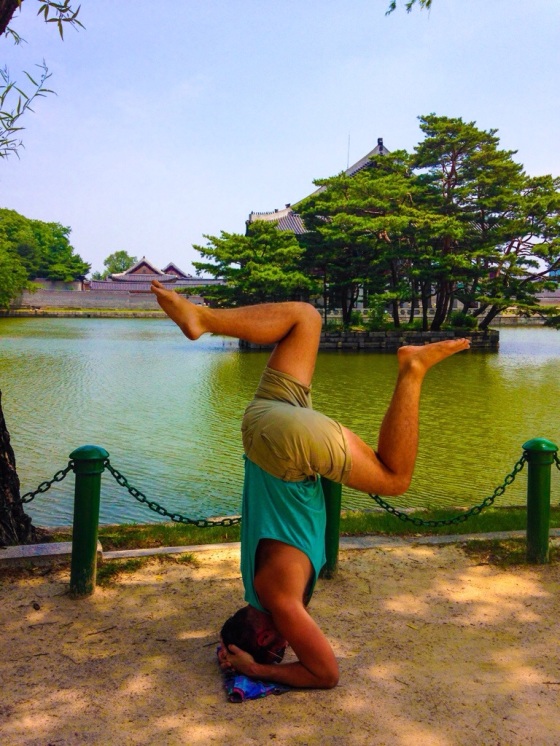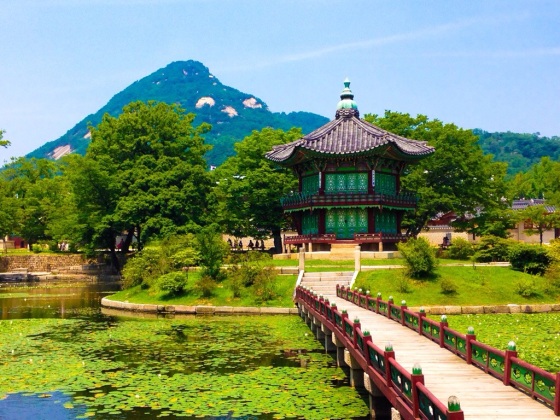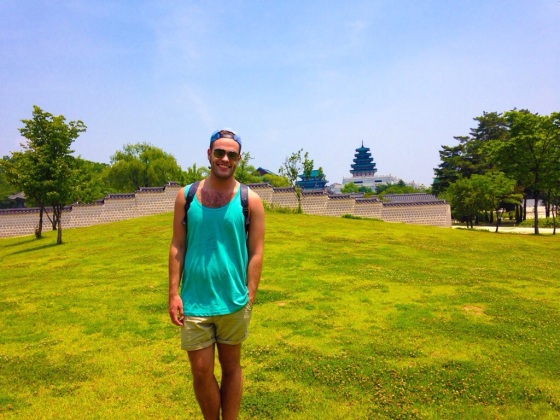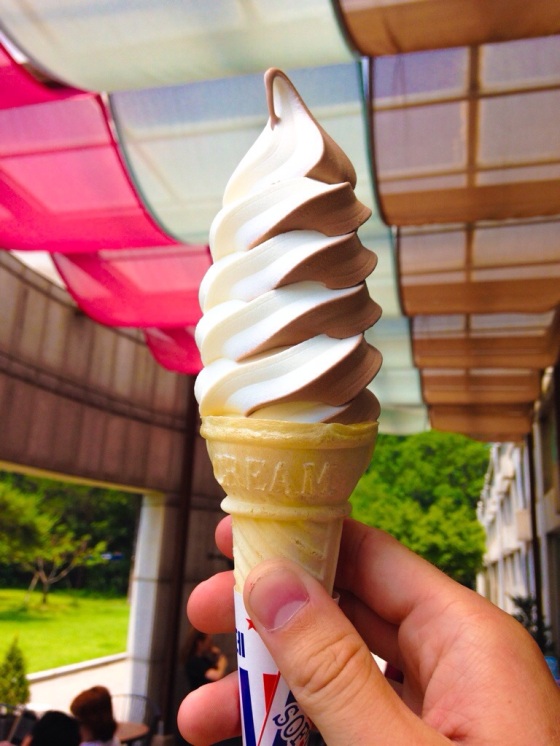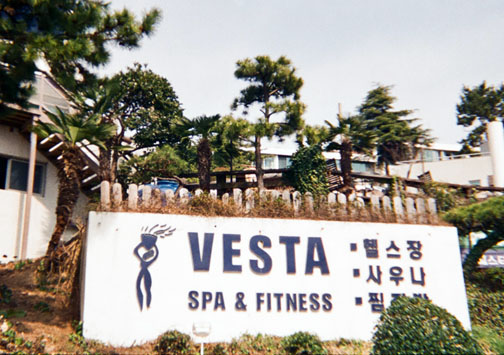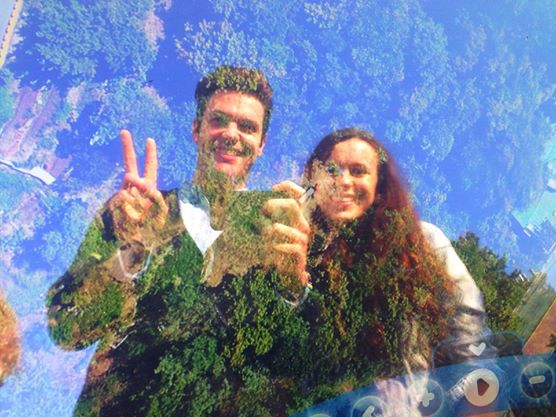I probably overuse the term “whirlwind” on this blog, but that’s how life feels these days. I’ve somehow been an English teacher for over 9 months, and it’s summer again, and I’m going to be a student again myself in four short months, and wow, wow, wow: craaaaaaajie.
I will now also use the term to describe my trip to Tokyo. Given that I received acceptance to attend school in Toronto in the fall, I decided to reward myself with a mid-April, weekend sabbatical to Japan, alongside my fellow Busan teachers Mary, Steph, Nina, and Kate. And boy, oh boy, what a whirlwind she was…













1. Steph and I boarding our Japan Airlines flight at the most ungodly hour. This hour felt all the more ungodly given that Steph, Mary, and I only slept for about 5 hours before waking up and cabbing to the Gimhae International Airport (blame it on the Love Motel beside Mary’s apartment, amirite?) Despite all of the yawns and early morning snarfling, we couldn’t contain our excitement for Tokyo, as evidenced with this 7AM selfie on the plane. Japan Airlines also did things right – relatively okay airplane food, but more importantly, Frozen and The Hunger Games on the airplane TVs! These are my priorities, people.
2. Fish heads, fish heads, roly poly fish heads. Our first stop upon arriving at Tokyo-Narita and figuring out the train into the city was Tsukiji Market. Fish connoisseurs out there may recognize the name: it’s the largest wholesale fish and seafood market in the world. Our original plan was to visit during one of Tsukiji’s famed fish auctions at 5:20AM on Sunday, only to find out that there are no auctions on Sundays. Boourns. In retrospect, however, our visit to Tsukiji just after 11AM was probably more enjoyable than it would have been during the early morning when the stalls were crawling with prospective fish buyers. The girls and I walked around the empty stalls, watching the occasional vendor slice and dice some of the largest fish I have ever seen into small slabs. Oddly enough, I found the market quite serene and peaceful. I enjoyed watching the vendors sitting in their booths, tallying numbers from the auction earlier that morning. There was a sense of rebirth as merchants would spray down their stalls with water, or hang up dozens upon dozens of gloves to dry. Even the buckets of discarded fish guts seemed to speak to me, likely because they reminded me of when The Simpsons traveled to Tokyo.
3. A meal fit for a Spiderman. Steph’s charm and dimples were working in overdrive while in Tokyo. She ended up befriending the foxiest of all silver foxes in Japan while we were exploring Tsukiji, and then, serendipitously, ran into him again across the street. None of us could’ve anticipated what would happen after we asked him about the best sushi restaurants in the area. He motioned us to follow him back to the market. A few minutes later, he pulled up with a motorized cart and told us to “hop on.” The girls and I piled onto the back and held on for dear life as he drove us over to the far side of the market area. He eventually dropped us off at a Japanese restaurant with an orange awning and drove off just as quickly as he had came. This cart ride was a truly epic experience, and I have to admit, I felt like the man. As we entered the restaurant, we noticed photos of Andrew Garfield and Emma Stone and the CEO of Amazon nomming on sushi exactly where we sat. We were clearly among good company. Our silver fox friend ended up doing incredibly well by us, because the sushi was the best I had ever had (and I’m not really even a sushi person!) Our meals consisted of 6 sushi rolls and 6 pieces of sushi on a large leaf, along with all the fixin’s – miso soup, wasabi, and green tea. The sushi master was incredibly friendly, as well as the owner of the little mom and pop shop. The meal felt so authentically Japanese, and after a mere 3 hours in Tokyo, I was feeling all of the bliss.
4. Let’s take a long walk around Yoyogi Park. Since Nina was on a different flight into Tokyo, we established a meeting place at the entrance of the Meiji Shrine, located in Tokyo’s Yoyogi Park. We walked around the serene park grounds to kill some time. We inspected barrels of sake dedicated in honour to Emperor Meiji, ate delicious matcha ice cream, and watched (what seemed to be) an Aboriginal Awareness and Appreciation Festival. I likened this part of the weekend to my tuk-tuk ride around Beijing’s historic hutongs because there were no expectations or time-crunching. We were free to take in the quieter pockets of Tokyo, stress-free.
5. Apart of something magical at Meiji. Once we met Nina, it was time to explore the Meiji Shrine. The main yard and sanctuary were surrounded by a series of green-roofed pagodas, that almost acted like a fortress. We took part in a mouth and hand cleansing ritual before entering the Shrine, and once inside, wrote down prayer offerings to the deified Emperor Meiji and Empress Shōken. The best part of our time at the Meiji Shrine were the two wedding processions that took place in the span of forty minutes. Both wedding parties were so sartorially elegant, dressed in flowing gowns, suits, and traditional Japanese kimonos. I felt great joy for these strangers and for their happy day at the historic shrine.
6. The crazy streets of Harajuku. A quiet walk through Yoyogi Park was followed by a crazy walk through Takeshita Dori and Ometesando Streets in the Harajuku District. Takeshita Dori was literally crawling with people – and I do mean crawling. I remember standing at the top of Takeshita and looking down into packed streets, wondering how were were going to brave the crowd. Luckily, once I was in it, I became distracted by Takeshita Dori’s bursts of cute, crazy colour. We shopped for a while at the Japanese Daiso, where I picked up tiny lanterns and fabric for a bunting I plan on making later this summer. We browsed the incredible Marc Jacobs bookstore (“BOOK MARC”) which sold books and art that Marc Jacobs found inspiring. We even saw a couple of Harajuku girls not being appropriated in Gwen Stefani or Avril Lavigne music videos. Ometesando Street was much quieter than Takeshita Dori, and was lined with luxury boutiques, housed in beautiful stone buildings with crawling ivy. I couldn’t help but long to live in Tokyo when we were on Ometesando Street. It is so cosmopolitan and everyone is so stylish. I suppose that’s why Harajuku is the centre of Japanese culture and fashion.
7. Just because you escape Korea doesn’t mean you can escape Frozen. We took a break after Harajuku to hang out in Tokyu Plaza. We were all starting to feel the exhaustion from our 5AM wake-up call, so it was Starbucks to the rescue. Little did we know that this was no ordinary Starbucks – it was a rooftop, Disney-themed Starbucks. It had an outer courtyard with leafy trees, buntings, and swaying lanterns everywhere. The best part was their playlist selection. I got to sing “Let It Go” twice and scare some Japanese teenagers with my beautiful singing voice in between sips of my drip coffee! Score.
8. When crossing the street doesn’t grow tired. I was most excited for Shibuya Crossing, since it’s the place I always think of when someone mentions Tokyo. Once we got to the intersection, I was so excited to see the little green man on the crosswalk light. The girls and I would barrel out into the road to snap photos and look around at the neon lights on the buildings unfolding before us. We crossed the street an obscene amount of times before looking for a place to eat. We explored a Japanese supermarket, which can be added to the list of reasons I want to live in Tokyo. It was so Western-friendly! So much cheese and Old El Paso salsa. After eating, exploring, and shisha-ing around Shibuya, we grabbed a couple of Sapporo tall boys and watched the intersection, until calling it a night at 1 AM. It was a cool night and I was shivering in my leather jacket, but there was a distinct feeling that we were infinite.
9. B1shes in Tokyo. Remember when I mentioned two sentences ago that we called it a night at around 1AM? That was a straight up lie. Instead, we found a free dance club playing decent music. Despite the club’s tiny size and dingy atmosphere, we danced for almost 3 hours and met some pretty cool, (subsequently strange), people. Look at the happiness on our faces, though: there were no regrets. Afterwards, we wandered aimlessly for about an hour, looking for a place to rest our weary heads. At this point, remember, we’ve been awake for 24 hours. Our efforts, unfortunately, proved fruitless. In one of the weirdest experiences I’ve ever had, the five of us slept in a stairwell until 7AM, until we couldn’t handle the cold floor anymore. We relocated to a cafe for another two hours. Don’t ask me what happened here – I was completely zonked.
10. Nothing a little Earth Day market can’t fix. I don’t want to minimize how exhausted we were at this point. The ability to form coherent sentences had left my body and the only thing propelling me on that Sunday morning was the promise of my double bed in Busan. We stumbled across an Earth Day market, which I used as an opportunity to rest as the girls wandered the stalls. I was however, given brief life by the bulldog pictured above, who slobbered all over my cardigan.
11. Tokyo views. After saying goodbye to Nina (she had to catch an early flight back to Busan), we walked a good 45 minutes from the Harajuku area to reach the Tokyo Metropolitan Government Building. The big draw, as opposed to Tokyo Tower and the Tokyo Skytree, was that the Metropolitan Government Building was free. We ascended the South Tower and were treated to a pretty spectacular panoramic view of Tokyo. A less groggy version of myself might have been slightly disappointed that it was a bit overcast that day, but Zombie Dylan was just happy to stare out a window and not think about his own pained wakefulness.
12. A rival for Takeshita Dori’s crazed streets. Our last stop on the Tokyo subway before heading to the airport was Asakusa, to visit the Senso-ji Temple. To reach the Temple, we had to walk through the hectic main strip of Asakusa Market (or “Nakamise Dori”). The market was lined with stalls that sold everything from fabric and lanterns to Japanese-themed knick-knacks and street food. We did a little shopping on the way to the temple, and I managed to pick up a Japanese flag and magnet to add to my respective collections. Asakusa Market was definitely a bit underrated, insofar as it is not a place I have raved about to people when they have asked about my trip. That being said, I had some of my nicest interactions in Tokyo with Asakusa Market shopkeepers. It was also in Asukusa that I began to rally, transforming from Zombie Dylan to Regular Dylan. Perhaps it should be higher on my list of Tokyo experiences.
13. A true derp at Senso-ji Temple. We made it through the market and it was finally time for Senso-ji, one of the most iconic places in all of Tokyo. We walked through the Kaminarimon, or “Thunder Gate” and rubbed on the giant red and black lantern for luck. I’m sure you’ve all seen the giant five-storied pagoda in pictures, right? It was even more stunning in person. The girls and I walked around the grounds, exploring the main hall and traditional Japanese gardens for about an hour before heading to catch the train to the airport. Steph and I both stopped at the entrance to the subway to take one last look at Tokyo. After a wistful sigh, we descended the stairs to begin the long journey back to Busan.
Tokyo was absolutely wild and definitely vies for the top spot on the list of “My Favourite Travel Experiences”. This was my second 40 hour whirlwind of a trip (along with Beijing) in two months. After the trip was over, I felt a little sad that I keep only exploring these amazing places for such a short amount of time. Two weeks later, I’m realizing how silly it is to feel like that. I’m so fortunate to get to explore the world at all, and feel so blissed out when I think of all the places I’ve experienced this year! Tokyo was brilliant and I have confidence that I’ll be sharing more “jokes in Tokes” in the future.


